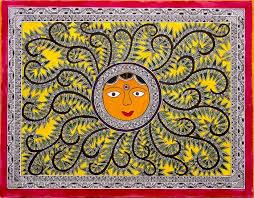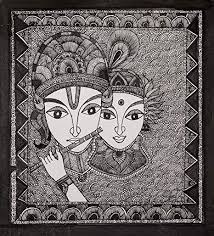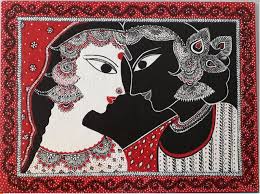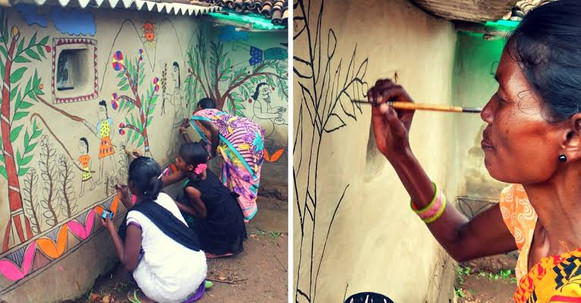Madhubani Painting : The Art Of Mithila
- Vedanshi Joshi
- Mar 19, 2020
- 2 min read
Updated: Feb 24, 2022
India has been renowned for its cultural richness and its diversity. It is well reflected in its folk art forms.
Madhubani is also referred to as Mithila painting since it traces its roots from the Mithila region of Bihar. It is believed that it originated in the period of Ramayana when the father of Sita, king Janak asked artists to depict the wedding of his daughter with Ram.

Traditionally, the intricate designs of this art was connected with ritual practices and festivals like Holi, Durga Puja, Kali Puja and many more.
Madhubani is a striking form of wall art mainly painted by women using fingers, twigs, matchsticks and natural pigments. Paste of powered rice is used to make the base. Geometric figures are drawn with no spaces left in between. It depicts the social and cultural lifestyle and symbolises love, valour, prosperity and devotion. Figurines of gods and deities from ancient epics are also portrayed.
Many painting centers have preserved these art work from generation to generation. Vaidehi and Benipatti in Madhubani and Kalakriti in Darbhanga are few of them.
Madhubani has its distinctive and versatile forms. Upper class women who belonged to Brahman and Kayastha sects mainly painted Bharni, Tantrik and Kanchan art forms. Women of lower castes depicted social life and the stories of Raja Shailesh. Having been turned into a globalised art form, presently there is no distinction in painting on the basis of caste.
Madhubani paintings illustrated people and their association with nature. In 2012, the trees were being cut down for the development of infrastructure. Shashthi Nath Jha who runs an NGO, Gram Vikas Parishad, ordered artists to paint portraits of Radha Krishna to prevent deforestation giving it an aesthetic significance.
But how did a rural art turned into a globalised art form?
It became popular when All India Handicraft Board encouraged women to sell their artwork for their livelihood. Madhubani art was recognised officially in the year 1969 when Sita Devi was awarded by the state government of Bihar. Women have done remarkable handiwork. Jagdamba Devi became the first recipient of national award in Mithila painting. She was also awarded with Padma Shri in 1975. Her son, Lal Karn and his wife, Moti Karn were also honoured with the same in 2003. Another spectacular work by Bharti Dayal finds the place of pride in the world. Her paintings are exhibited in most of the government offices of India. Ganga Devi bara Devi Yamuna Devi Leela Devi are others who have achieved greater heights.
Do write to us if you know anyone who does this art !











































Comments